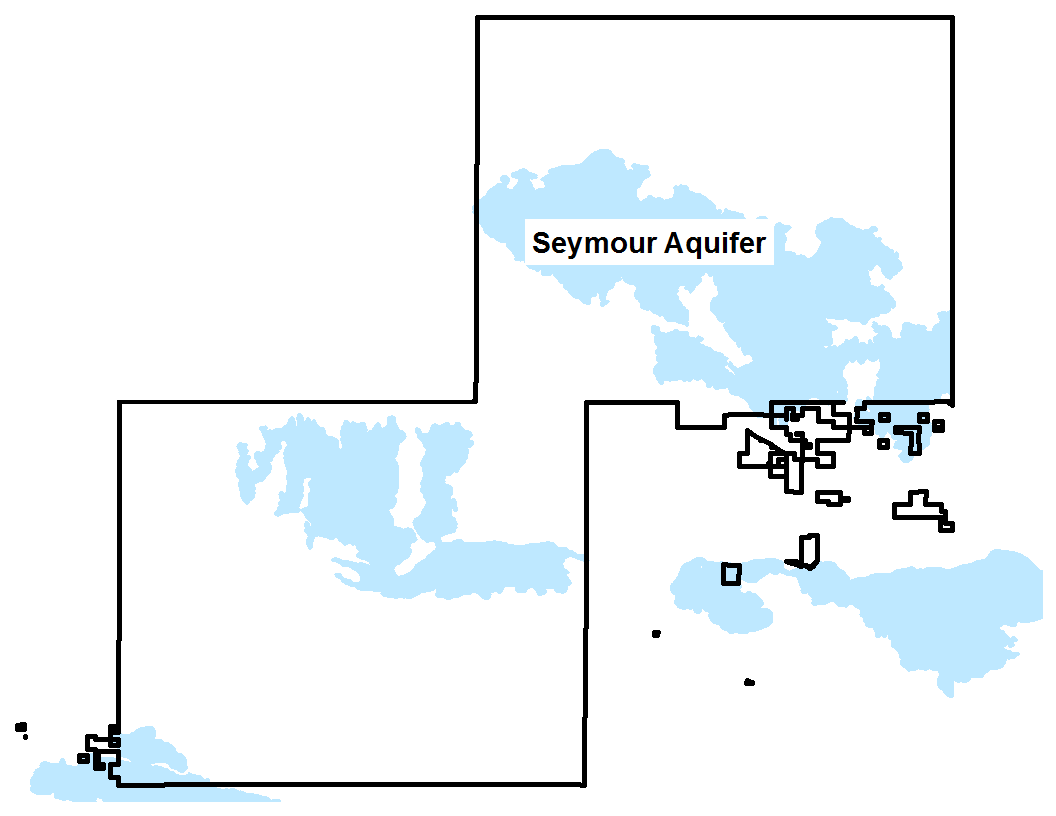Seymour Aquifer
Groundwater within the District is derived primarily from the Seymour and Blaine aquifers. Minor amounts of groundwater are also produced from the porous portions of other local formations such as the Whitehorse Group. The Seymour strata typically overlies the Blaine Formation and/or Whitehorse Group.
Seymour Aquifer:
The Seymour Aquifer is a major aquifer in Texas and consists of isolated areas of alluvium that are erosional remnants of a larger area. As defined by TWDB, it is composed of remnants of the Seymour Formation, the Lingos Formation, and younger alluvial deposits, all of Quaternary age. The aquifer is found in parts of many north‐central and Panhandle counties of Texas, and in the District is present in four distinct and separate areas referred to as “Pods”.
It consists of discontinuous beds of poorly sorted gravel, conglomerate, sand, and silty clay deposited during the Quaternary Period by eastward‐flowing streams. Saturated thickness is typically between five and eighty feet. Aquifer thickness may exceed 250 feet in isolated spots in the western portion of Collingsworth County. The thickness in the eastern portion of the county is generally too thin to support irrigation. The aquifer is also generally thinner in Hall County but does support irrigation. This aquifer is under water‐table conditions in most of its extent, but artesian conditions may occur where the water‐bearing zone is overlain by clay. The lower, more permeable part of the aquifer produces the greatest amount of groundwater.
Water quality is generally fresh to slightly saline, but some high saline problems occur. Nitrate concentrations in excess of drinking water standards are common. The Seymour Aquifer comprises about twenty‐three percent of the District area and provides about seventy seven percent of the irrigation water in the District. Yields of wells range from five gallons per minute to as much as 1,000 gallons per minute depending upon saturated thickness, with yields averaging about 300 gallons per minute.
Resources
About MGCD
The District was created in 1985 by the 69th Texas Legislature (HB1148) with the local confirmation election being held in November 1986.
Board of directors
MGCD is governed by a Board of eight elected Directors. Each Director represents a Precinct as shown on the map below.
District Rules
The District’s Rules are a formal document that describes the legal tools used by the District to achieve the objectives within the Management Plan.
District Services
MGCD offers many services to the community. Water quality testing, well siting, and educational presentations are some of the frequent services provided.

